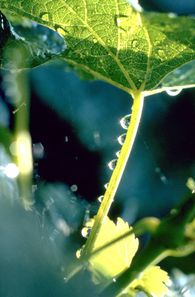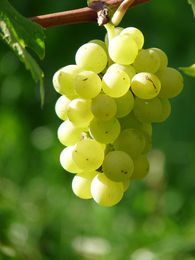The nectar of which the Mazza wines are crafted, originate from the grapes of the following varieties:
Grüner Veltliner
The Veltliners belong to the oldest vine varieties of Europe. The varieties consist of „Grüner Veltliner“, „Roter Veltliner“ and the „Frühroter Veltliner“. Their origins are not precisely known. However, the fact that already emperor Augustus appreciated the Veltliner wines, is an indicator to the age of this variety.
Peppery spiciness, fruity, effervescent, of predominantly dry build. The Grüner Veltliner is the most important variety cultivated in Austria, commanding a third of the wine growing area. The quality spectrum is broad: it reaches from light, effervescent and spicy wines, often consumed young, as Heuriger, all the way to the Smaragds of substance, which are excellent for laying down.
Acreage: 17.479 ha in Austria
Riesling
This variety is also known as the 'wine of kings', and/or as the 'king of wines'.
It is assumed that the Riesling vine originates in the 11th century and has been cultivated from the wild vine Vitis vinifera silvestris. The first documented mention in Austria took place in the 13th century, mentioning Weissenkirchen, where to this very day a vineyard named 'Rietzling' exists, an alteration of the originally documented name.
Aristocratic aroma, finesse and class distinguish the noble Riesling. Its fine bouquet is characterized by delicate echoes of stone fruit (apricots and peaches). The Riesling, because of his piquant acidity, is racy and lasting to the palate. The wines are highly elegant with excellent aging potential. Especially impressive is the ability of this variety to transfer the character of the respective terroir to the bottle.
Acreage: 1.643 ha in Austria
Chardonnay
In Austria it has a rather limited acreage, but Chardonnay counts among the world's most widely cultivated varieties.
The wines, partially with a high alcohol content, are dry, steely, fragrant white wines of considerable acidity, with an overall style of lighter alcohol content and essence.
Gelber Muskateller
The white variety Gelber Muskateller (Muscat blanc à petits grains) belongs to the large family of Muskatellers and is considered the noblest vine within its family.
The Gelber Muskateller counts among the oldest varieties in the Mediterranean region, and was already known to the Greeks under the name of Anathelicon moschaton, and later on to the Romans as apianae. These antique predicates were probably termed because bees and wasps are drawn to the grapes by their sweetness and fragrance. The Greeks and the Romans contributed to the distribution of the variety all throughout Europe. In the Wachau region the cultivation of the Gelber Muskateller is documented since anno 1400. Demanding of its location, susceptible to frost and late maturing. It produces light, racy wines with a distinctive, yet delicate nutmeg bouquet.
Acreage: 143 ha in Austria
Blauer Zweigelt
The Blauer Zweigelt variety is a relatively new breed. It was crafted in the Bundeslehr- und Versuchsanstalt für Wein- und Obstbau Klosterneuburg, the Institute for traditional and experimental Viticulture and Pomiculture Klosterneuburg, in the year 1922. It is a crossbreed from Blaufränkisch and St. Laurent. The Zweigelt grape is the most widely distributed red variety in Austria.
As a young wine it exhibits a fruity aroma, which becomes more well-rounded and delicate with maturity. The variety is well suited for the production of light table wines, as well as for more robust laying down wines.
The wines, of good substance, fruity, often with mild vanilla fragrance and soft tannins in the finish, when young with a St. Lucie cherry aroma, are definitely suitable for laying down.



